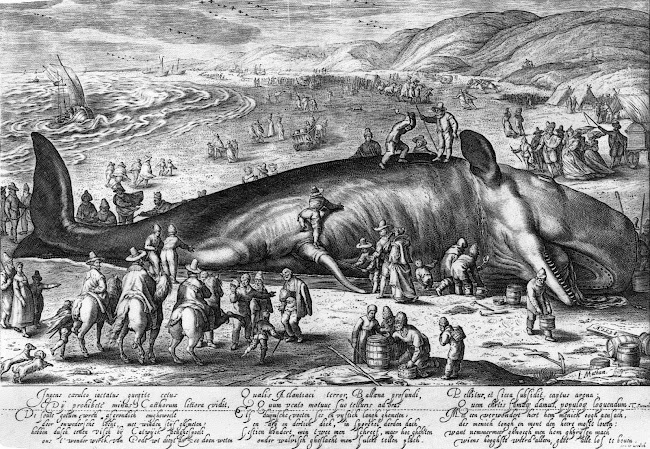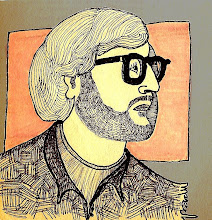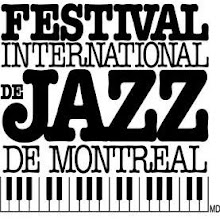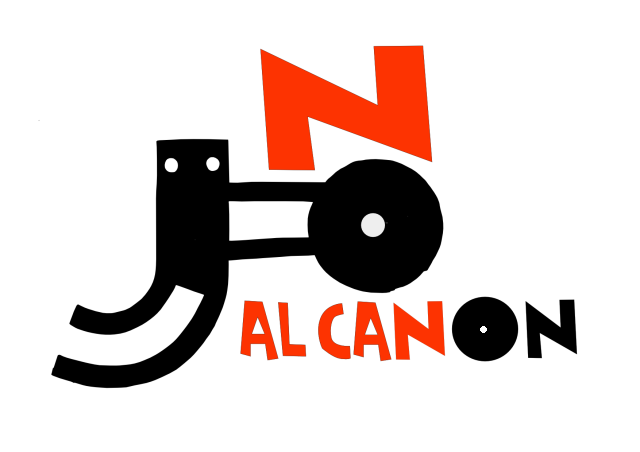martes, 24 de junio de 2014
Medeski Martin & Wood
You'll hear such moody, united rythym that breaks right out of tangents to follow straight, hard, funk grooves or drum and bass jams. I love the play between the members. The focus of the album is that: loose tangents and avant-garde, dark sounds bursting into tight grooves. Some of the sounds are so touching they'll make you want to cry. John Medeski's reverb piano solo in "Last Chance to Dance Trance" makes me feel like I'm waltzing at a royal ball with the most beautiful woman ever touched. "Chinoiserie" has a loose jazz sound until the trio snaps into a united climax and Billy Martin takes a solo on drums. Fans of trio's, the ultimate setting for quality musicians, will immeaditely see the beauty in this recording. missing it would be a real goddamn shame. This is a testiment to the beauty of the Jamband scene. Imagine the strongest jazz rhythm section you can (bass, drums, keys), get rid of all the superfluous stuff that usually hides them (vocals, guitars, and light shows), and then let 'em get nice and funky. MMW are only about advancing their groove, with an egoless melding that baffles the mind. Each of the plays so loosely, yet together they offer something that's incredibly well structured.
Friday Afternoon In The Universe is one of the most catchy, funky jazz release I know. Instead of touching your mind, this music moves your body. The music is complex and easy to listen at the same time. Highly recommended to curious listeners and jazz enthusiast as well
Etiquetas:
jazz,
Medeski Martin and Wood
lunes, 23 de junio de 2014
Charles Mingus
Besides the masterfully sloppy music within, this 1961 recording offers two noteworthy elements to the Mingus discography: the presence of Roland Kirk blowing his usual assortment of horn-like oddities, and the presence of Mingus himself on piano (Doug Watkins replaces Mingus on bass). The loose (even for Mingus) environment brings Mingus's vibrant but tense sense of humor to the fore. As usual, his compositions borrow heavily from blues and gospel sources. His quirky, devilish piano work adds a new dimension to his music while Kirk, Booker Ervin, and Jimmy Knepper all contribute solos that are alternately pithy and passionate. Mingus even sings his own idiosyncratic lyrics in a number of spots. The CD reissue adds a long but at times insightful interview with Atlantic head Neshui Ertegun. Not a Mingus essential, but rewarding for its peek into Mingus's complex personality and its compelling blend of bitterness and jocularity. While Mingus Ah Um and The Black Saint & the Sinner Lady get the most attention (and hey, they're great), Oh Yeah is my favorite Mingus album.
Etiquetas:
Booker Ervin,
Charles Mingus,
Danny Richmond,
Doug Watkins,
jazz,
Jimmy Knepper,
Roland Kirk
Gavin Bryars
Stepping into the territory of Gavin Bryars is like coming home, so familiar are the morphemes with which he composes his musical language. One of the most significant recordings in the Bryars catalogue, this disc offers a fine condensation of his spirited and nostalgic sensibilities.After the Requiem dates from 1990 and follows his Cadman Requiem of the previous year. After completing the latter, which was written for the Hilliard Ensemble in memory of Bryars’s friend Bill Cadman, Manfred Eicher suggested that Bryars spin an instrumental postlude from the requiem’s latent fibers, thus giving us the title piece of this brooding and gorgeous album. Scored for two violas, cello, and electric guitar, After the Requiem offers a distinct take on the state of mourning it so affectionately recreates. Like the gravelly strings that open the piece, the mood is raw and unbounded. Frisell’s guitar sears the darkness like the northern lights with a slow and lustrous fire, bleeding spectral life force into the evening sky. The strings gather momentum, as if to coax the guitar toward the horizon, chasing the memory of an afternoon that can no longer be recovered. Frisell plays as if he were bowing the guitar, drawing out an amplified sustenance that nourishes the vocal hunger of his accompaniment. Where the strings seem to mimic voices, the guitar mimics the strings, ad infinitum. The piece slows about midway through, burrowing even deeper into contemplative soil, at which point Frisell wrenches out some grinding low tones from the lower register of his axe. What would be but one voice lost in a power chord more forcefully played rings here with the humility of supplication. Before long the guitar lets out more substantial tones and shifts to an aerial shot of the same landscape. The earth recedes, leading into the most beautiful moment of the piece, during which the guitar drops from a soaring high note. One can hear, indeed almost taste, the meticulous care that went into this performance. The music fades, as if sending off a spirit to a realm where life continues of its own accord. The continuity between instruments here is such that there are almost no audible gaps between them. And while all the musicians play with consummate grace, Frisell is nothing short of astonishing. Despite the polished feel of the piece it was the result, as Bryars makes clear in his recording diary, of much refinement and experimentation on Frisell’s part, working closely with the composer to achieve the ideal effect.From ECM Records.
domingo, 22 de junio de 2014
Miles Davis
Electrifying performance by half a dozwn of the finest and most gifted musicians to ever play any of the involved instruments - Herbie Hancock on Hammond Organ, Billy Cobham on Drums, John McLaughlin on that eectrifying Lead Guitar and The Don himself the one and only 'Mr. Cool' Miles Davis in a session as energetic as anyting ever released. i am usually not the guy to use headphones to listen to great music, since i have the possibility to play my music LOUD at home. But this music cries for a volume that you simply cannot play out in a normal residential aerea.
The whole theme cruises around a Documetary movie about the Life of a black Boxer, Miles admired. The Producer was the experienced Teo Macero and the whole recording process only took an hour . The Band was already improvising ; John McLaughlin playing a guitar riff when Miles joined in at 2:13 minutes, checked the vibe and basically explodes on one of his longest, meanest , finest and most energetic Solos ever. This set the tone for the rest of the session. It was the era of Jazz moving away from the Clubs and Hipster circles and becoming Pppualar , the enetgy was all around and Rock was leading the movement in music. Miles was ready to join in and had already sold millions of records to both his Jazzz Fans from the beginning and to the Rock Youth. Anyway. after 25 minutes of this powerful stuff you are not tired , but eager to hear more 1 Flip the baby over and get more of the same, in a less overwhelming haste, but as innovative, swinging and rocking. By chance Herbie Hancock, who wasn't a part of the Miles Davis Quintet by that time was in the Studio building and atracted by these enormous gooves joined in for the latter 15 minuts of Side B. The start of Side B is based loosely on James Brown's "Say It Loud, I Am Black And I'm Proud", later moving over to more mellow downbeats from the former Miles Davis Record Bitches Brew. Anyway- Most people wouldn't recognize these anyway (i read that on allmusic.com) .
Etiquetas:
Billy Cobham,
Chick Corea,
Herbie Hancock,
jazz,
John McLoughlin,
Miles Davis
sábado, 21 de junio de 2014
Tarkovsky Quartet
The unique band founded by François Couturier continues to draw inspiration from the films of Andrey Tarkovsky as its frame of reference expands. Allusions to Pergolesi, Bach and Shostakovich are to be found in the compositions here, as are compelling group improvisations. As the Irish Times wrote of the earlier “Nostalghia - Song for Tarkovsky” album (recorded 2005): “Mixing classical rigour with improvisation both formal and free, what emerges is austerely beautiful, etched in sombre hues and redolent of an unslakeable thirst to connect with a deeper well of the spirit.”
Etiquetas:
Anja Lechner,
François Couturier,
jazz,
Jean Louis Matinier,
Jean Marc Larché
lunes, 9 de junio de 2014
Neil Young & Crazy Horse
Neil Young's second solo album, released only four months after his first, was nearly a total rejection of that polished effort. Though a couple of songs, "Round Round (It Won't Be Long)" and "The Losing End (When You're On)," shared that album's country-folk style, they were altogether livelier and more assured. The difference was that, while Neil Young was a solo effort, Everybody Knows This Is Nowhere marked the beginning of Young's recording association with Crazy Horse, the trio of Danny Whitten (guitar), Ralph Molina (drums), and Billy Talbot (bass) that Young had drawn from the struggling local Los Angeles group the Rockets. With them, Young quickly cut a set of loose, guitar-heavy rock songs -- "Cinnamon Girl," "Down by the River," and "Cowgirl in the Sand" -- that redefined him as a rock & roll artist. The songs were deliberately underwritten and sketchy as compositions, their lyrics more suggestive than complete, but that made them useful as frames on which to hang the extended improvisations ("River" and "Cowgirl" were each in the nine-to-ten-minute range) Young played with Crazy Horse and to reflect the ominous tone of his singing. Young lowered his voice from the near-falsetto employed on his debut to a more expressive range, and he sang with greater confidence, accompanied by Whitten and, on "Round Round," by Robin Lane. Everybody Knows This Is Nowhere was breathtakingly different when it appeared in May 1969, both for Young and for rock in general, and it reversed his commercial fortunes, becoming a moderate hit. (Young's joining Crosby, Stills & Nash the month after its release didn't hurt his profile, of course.) A year and a half after its release, it became a gold album, and it has since gone platinum. And it set a musical pattern Young and his many musical descendants have followed ever since; almost 30 years later, he was still playing this sort of music with Crazy Horse, and a lot of contemporary bands were playing music clearly influenced by it.
Etiquetas:
Billy Talbot,
Crazy Horse,
Danny Whitten,
Neil Young,
Ralph Molina,
Rock
Meredith Monk
“Songs of Ascension” is a major new recording from composer Meredith Monk and her vocal ensemble from 2008. Written originally in 2008, it is conceived as a continuous composition, a departure from Monk’s earlier collaged or episodic extended works. In recent years Meredith Monk’s been expanding into the worlds of orchestra and string quartet. On “Songs of Ascension” she teams up with a string quartet of New York players well versed in new music. With winds, percussion and two vocal groups added to her already extraordinary singers, this is one of Monk’s most musically ambitious ventures. Voices and instruments are paired and balanced against each other to an extent rare in her music. Inspirations for the work included the Song of Ascents, a group of psalms said to have been sung during pilgrimages, and a timely invitation to perform at an 8-story tower designed by visual artist Ann Hamilton. “Songs of Ascension” finds Monk playing with the musical, sonic, metaphysical and literal connotations of upward movement.
Jozef Van Wissen & Jim Jarmusch
The Mystery of Heaven is the second collaborative album between lute revivalist and innovator Jozef Van Wissemand guitarist Jim Jarmusch to appear in 2012. The first, Concerning the Entrance Into Eternity, appeared on Important in the spring. It showcased a seemingly natural intimacy and near instinctive rapport between the pair. This date on Sacred Bones is very much a continuation of the dialogue begun on the earlier album, but also stands on its own with a few key differences. The brief "Etimasia" opens with Van Wissem using an alternate tuning to execute a minor-key progression on his swan neck lute. As Jarmusch answers and paints the margins with reverb and droning distortion, an element of tension and drama are articulated. They are resolved in yet another tuning in a shorter reprise near the end of the album. In "Flowing the Light of the Godhead," Van Wissem duets with Jarmusch directly by playing a 12-string electric guitar. Eleven minutes in length, it's a long, spacious, psych drone where feedback and distortion are melodic devices. The interplay is not unlike Spacemen 3's on Dreamweapon, though it's far more musically adventurous. Its textures, use of space, and restraint spiral out from the center into the unknown. The digital version of the set contains a bonus cut: a very different version entitled "Flowing Light of the Godhead (Eternal Sun)." The addition of actress Tilda Swinton's narration in the first half of "The More She Burns the More Beautifully She Glows" (based on a text by medieval mystic Mechthild of Magdeburg circa 1260 AD) sets up a gorgeous interplay where Jarmusch's feedback offers both support for Swinton and an introduction to Van Wissem's repetitive, nearly hypnotic lyricism on the lute. The guitarist then spins off, swirling and flowing in and out of the lutist's fingerpicked chord voicings, into an extremely colorful ether of single notes and skeletal yet expansive melodic lines of his own. Certainly The Mystery of Heaven is a standalone recording and is to be enjoyed on its own. That said, knowledge of Concerning the Entrance Into Eternity is edifying, because taken together, these two albums offer listeners a more complex portrait of a unique dialogue, where all elements spacial, sonic, lyrical, and textural create a profoundly beautiful musical language.Thom Jurek.
Etiquetas:
clasica,
Jim Jarmusch,
Jozef Van Wissen,
Rock
domingo, 8 de junio de 2014
Phish
Junta is strongly based on jamming, definatley more so than any other Phish album. The album also gives off a very real sound, similar to how a bands first album usually is. Mainly because at this time, their were simply a couple of Vermont dorm room pals who just liked to jam. Money really wasn't a must, cathing fame (Especially from a Jam Band) were very unrealilistic. But luckily Phish managed to break into the mainstream and put a scar into it, unlike anyone has really done before. Junta is the first official studio release from the American rock band Phish. The album was independently recorded at Euphoria Sound Studio, now known as Sound & Vision Media, in Revere, MA by engineer Gordon Hookailo. Some of the recording was documented on video tape by studio owner Howard Cook. The recording was released on tape in 1988, and did not appear in stores officially until May 8, 1989. The album was re-released by Elektra Records on October 26, 1992.In addition to a few more traditionally structured songs, Junta contains symphonic-like epics, large-scale improvisation and multi-partprogressive rock suites.
Etiquetas:
Joe Fishman,
Mike Gordon,
Page McConell,
Phish,
Rock,
Trey Anastasio
Suscribirse a:
Entradas (Atom)
























